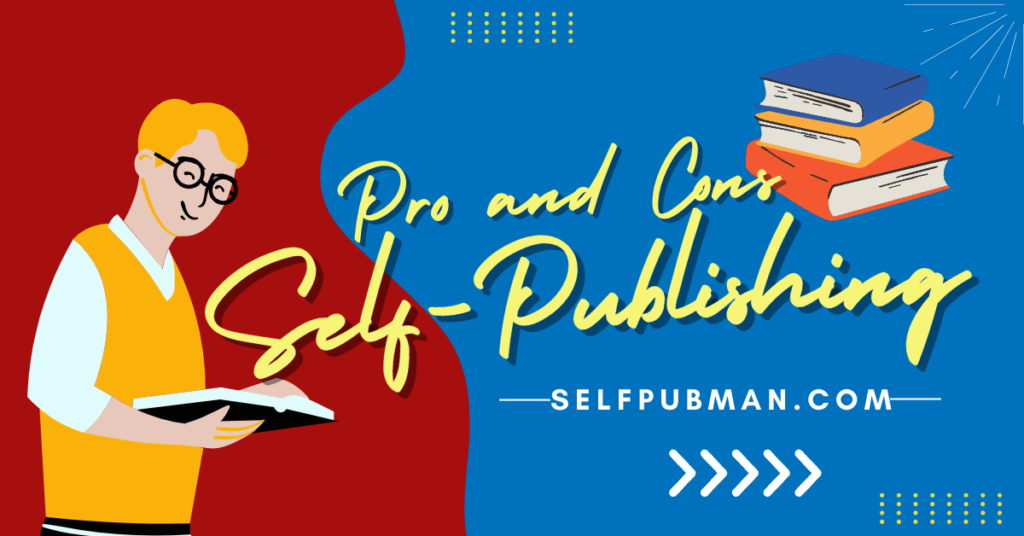In today’s digital age, self-publishing has emerged as a viable option for aspiring authors and content creators to share their work. With the rise of platforms like Amazon Kindle Direct Publishing (KDP) and various online tools and resources, self-publishing has become more accessible than ever before. However, like any endeavor, self-publishing has pros and cons that individuals should consider carefully. In this article, we will explore the advantages and disadvantages of self-publishing to help you decide whether it’s the right path.
The Pros and Cons of Self-Publishing: What You Need to Know
The Pros of Self-Publishing
Creative Control
One of the significant advantages of self-publishing is the level of creative control it offers. As a self-published author, you can make all decisions regarding your book, from the content and cover design to the marketing strategies. You are not bound by the constraints imposed by traditional publishing houses, allowing you to maintain your artistic vision and retain ownership of your work.
Speed to Market
Traditional publishing can be lengthy, involving finding a literary agent, securing a publishing deal, and going through multiple rounds of editing and revisions. On the other hand, self-publishing allows you to bypass these time-consuming steps and get your book to market much quicker. In addition, you can set your timeline and release your work whenever you feel ready.
Higher Royalties
One of the most enticing aspects of self-publishing is the potential for higher royalties. In traditional publishing, authors typically receive a percentage of the book’s sale price as a royalty. However, with self-publishing, you can earn more revenue from each sale. This can be particularly advantageous if you have a strong marketing strategy and can reach a broad audience.
Flexibility and Adaptability
Self-publishing offers unparalleled flexibility and adaptability. You can experiment with different genres, formats, and styles without adhering to market trends or publisher preferences. In addition, you can easily update and revise your work based on reader feedback, ensuring your book remains relevant and engaging.
The Cons of Self-Publishing
Lack of Publishing Support
One of the primary disadvantages of self-publishing is the absence of traditional publishing support. Authors benefit from professional editors, designers, and marketers who help polish and promote their work when working with a publishing house. However, as a self-published author, you are responsible for finding and hiring these services independently, which can be daunting and costly.
Limited Distribution and Reach
While self-publishing platforms have opened up new avenues for distribution, reaching a broad audience can still be challenging. Traditional publishers often have established networks and relationships with booksellers, libraries, and reviewers, which can significantly enhance an author’s reach. However, self-published authors must invest significant time and effort into marketing and building their audience to maximize their book’s exposure.
Stigma and Perceived Quality
Although the stigma around self-publishing has diminished in recent years, some people still perceive self-published works as inferior in quality compared to traditionally published books. Breaking through this bias and proving the quality of your work can be an uphill battle. It requires investing in professional editing, cover design, and formatting to ensure your book meets or exceeds industry standards.
Sole Responsibility for Success
Self-publishing places the entire burden of success on the author’s shoulders. While traditional publishing offers the support of a dedicated team, self-published authors must handle all aspects of the publishing process, including editing, proofreading, cover design, formatting, marketing, and distribution. This can be overwhelming, especially for authors who may not have experience or expertise in these areas. Self-published authors must be willing to take on the role of an entrepreneur, investing time and resources into building their brand and promoting their work.

Conclusion
Self-publishing offers numerous advantages, including creative control, speed to market, higher royalties, and flexibility. In addition, it empowers authors to share their stories with the world on their terms. However, it also comes with challenges, such as the lack of publishing support, limited distribution, stigma, and the sole responsibility for success.
Aspiring authors should carefully weigh the pros and cons and consider their goals and resources to make the most of self-publishing. Investing in professional services, such as editing and cover design, is essential to ensure a high-quality finished product. Additionally, authors must dedicate time and effort to marketing and building their audience to maximize their book’s reach.
Ultimately, self-publishing can be a rewarding journey for those willing to do the necessary work and embrace the entrepreneurial aspect of the process. By leveraging the available tools and resources, authors can bypass traditional gatekeepers and establish a direct connection with their readers.
If you’re considering self-publishing, remember that success in this field requires excellent writing and a strategic approach to marketing and building your author brand. However, with dedication, perseverance, and a well-crafted book, you can position yourself for success in the competitive world of self-publishing.
So, whether you choose the traditional publishing route or the self-publishing path, remember that each option has its advantages and challenges. Evaluate your goals, consider your resources, and make an informed decision that aligns with your vision as an author.





